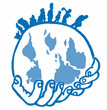The 4th WHO Fair Pricing Forum took place from 6 – 8 February 2024. Ellen ‘t Hoen spoke at the opening plenary. Below are her speaker notes.
I started working on medicines pricing in the late nineties, with Médecins sans Frontières. At the time, medicines to treat HIV/AIDS had begun to turn the deadly disease into a chronic one. But only for people living with HIV in the North; elsewhere in the world, people with HIV died.
Antiretroviral medicines needed to treat the disease had a price tag of 10,000 to 15,000 USD per person per year and were out of reach of most people. But their actual cost of production was modest: once generic manufacturers brought ARVs to the market in the early 2000s, prices fell more than 90%.
The following elements made this happen:
- HIV medicines were added to the WHO Essential Medicines List.
- WHO prequalification of medicines assured quality and confidence.
- As of 2003, funding mechanisms such as the Global Fund and the US President’s Emergency Fund for Aids Relief became available.
- Flexible approaches to intellectual property were introduced, including extensive use of TRIPS flexibilities by countries following the adoption of the Doha World Trade Organization (WTO) Declaration on Trade-Related Aspects of Intellectual Property Rights (TRIPS) and Public Health in 2001.
- Since 2009, the work of the Medicines Patent Pool (MPP) assured patents on new ARVs did not pose a barrier to the production of low-cost generic HIV medicines.
- And finally, there was transparency: the prices paid for ARVs were collected and were made publicly available almost in real time.
